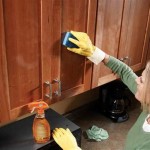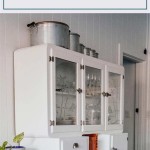Oil-Based vs. Water-Based Paint for Kitchen Cupboards: A Comparative Analysis
Selecting the appropriate paint for kitchen cupboards is a critical decision that impacts both the aesthetic appeal and the longevity of the painted surface. Two primary categories of paint are commonly considered: oil-based and water-based (also known as latex or acrylic). Each type possesses distinct properties that influence its suitability for this specific application. A thorough understanding of these properties is essential for making an informed choice.
This article provides a comprehensive comparison of oil-based and water-based paints, focusing on factors such as durability, application, finish, drying time, odor, and environmental impact, relative to their performance on kitchen cupboards. The analysis aims to equip homeowners and professionals with the knowledge necessary to choose the paint that best meets their needs and preferences.
Durability and Resistance
Durability is a paramount consideration when selecting paint for kitchen cupboards. These surfaces are subject to frequent use, handling, and exposure to moisture, grease, and cleaning agents. The paint must be resilient enough to withstand these challenges and maintain its integrity over time.
Oil-based paints have historically been recognized for their superior hardness and resistance to chipping, scratching, and staining. They form a robust, enamel-like finish that can withstand considerable wear and tear. This inherent durability makes them a popular choice for high-traffic areas like kitchens, where cupboards are frequently touched and cleaned.
Water-based paints, on the other hand, have traditionally been perceived as less durable than their oil-based counterparts. However, advancements in paint technology have significantly improved the durability of modern water-based formulations. High-quality acrylic or latex paints designed for cabinetry can now offer comparable resistance to chipping and scratching, particularly when paired with a suitable primer and topcoat. Furthermore, water-based paints exhibit superior flexibility, which allows them to expand and contract with changes in temperature and humidity, reducing the risk of cracking or peeling.
The resistance to grease and stains is another crucial factor to consider. Oil-based paints excel in this area due to their inherent impermeability. They create a tightly sealed surface that repels grease and prevents stains from penetrating the paint film. This makes them easier to clean and maintain, especially in a kitchen environment where spills and splatters are common.
While water-based paints may not offer the same level of grease resistance as oil-based paints, some formulations incorporate additives that enhance their stain-blocking properties. A high-quality acrylic paint with a tightly cross-linked polymer structure can provide excellent resistance to staining, especially when protected with a durable topcoat. Regular cleaning with a mild detergent is also essential for maintaining the aesthetic appeal of water-based painted cupboards.
Ultimately, the choice between oil-based and water-based paint in terms of durability depends on the specific formulation and the application process. While oil-based paints offer inherent hardness and grease resistance, modern water-based paints can provide comparable performance with proper preparation and application techniques.
Application and Finish
The application process and the resulting finish are critical aspects to evaluate when choosing between oil-based and water-based paints. These factors influence the ease of use, the final appearance of the painted surface, and the overall project time frame.
Oil-based paints are known for their excellent leveling properties. They tend to flow smoothly and evenly, minimizing brush marks and creating a smooth, glossy finish. This self-leveling characteristic makes them a popular choice for achieving a professional-looking result, even for less experienced painters. However, the application of oil-based paints requires careful surface preparation, including thorough sanding and priming, to ensure proper adhesion.
Water-based paints, in contrast, tend to dry faster than oil-based paints, which can be both an advantage and a disadvantage. The quick drying time allows for multiple coats to be applied in a single day, reducing the overall project time frame. However, it also means that brush marks can be more noticeable if the paint is not applied quickly and evenly. Modern water-based paints are formulated to improve their leveling properties, but some brush marks may still be visible, especially when using lower-quality brushes or rollers.
The type of finish also plays a significant role in the overall aesthetic appeal of the painted cupboards. Oil-based paints typically provide a harder, glossier finish than water-based paints. This high-gloss finish can add a sense of elegance and sophistication to the kitchen. However, it also tends to highlight imperfections in the surface, making meticulous surface preparation even more crucial.
Water-based paints are available in a wider range of finishes, from matte to high-gloss. This versatility allows homeowners to choose the finish that best complements their design preferences and the overall style of their kitchen. Matte finishes are popular for creating a softer, more subtle look, while semi-gloss and high-gloss finishes can provide a more durable and easier-to-clean surface. The choice of finish ultimately depends on the desired aesthetic and the level of maintenance required.
Clean-up is another important consideration. Oil-based paints require the use of solvents, such as mineral spirits or paint thinner, for clean-up. This process can be messy and time-consuming, and it also requires proper disposal of the used solvents. Water-based paints, on the other hand, can be easily cleaned up with soap and water, making the process much simpler and more environmentally friendly.
Odor, VOCs, and Environmental Impact
The odor and environmental impact of paint are increasingly important considerations for homeowners and professionals alike. Volatile organic compounds (VOCs) are organic chemicals that evaporate from paint as it dries. These VOCs can contribute to indoor air pollution and may pose health risks, particularly for individuals with respiratory sensitivities.
Oil-based paints typically contain higher levels of VOCs than water-based paints. The strong odor associated with oil-based paints is primarily due to the evaporation of these VOCs. The use of oil-based paints can result in prolonged exposure to these chemicals, which can be particularly problematic in enclosed spaces like kitchens. Proper ventilation is essential when working with oil-based paints to minimize the risk of exposure.
Water-based paints, particularly low-VOC or zero-VOC formulations, offer a significantly more environmentally friendly alternative. These paints contain minimal amounts of VOCs, resulting in reduced odor and a lower impact on indoor air quality. The use of low-VOC water-based paints can contribute to a healthier and more comfortable living environment.
The environmental impact of paint extends beyond VOC emissions. The production and disposal of paint also contribute to environmental pollution. Oil-based paints require the use of petroleum-based solvents, which are derived from non-renewable resources. The disposal of leftover oil-based paint and used solvents can also pose environmental challenges.
Water-based paints are generally considered to be more environmentally sustainable than oil-based paints. They are often made with renewable resources and require less energy to produce. The disposal of water-based paint is also less problematic, as it can often be recycled or disposed of in a more environmentally responsible manner. The availability of recycled paint options further enhances the sustainability of water-based paints.
The choice between oil-based and water-based paint based on odor and environmental impact is clear: water-based paints, especially low-VOC or zero-VOC formulations, offer a significantly healthier and more environmentally responsible alternative.

Choosing Kitchen Cabinet Paint Oil Based Paints Vs Water Or Latex

Best Paint For Cabinets Oil Enamel Or Hybrid

Kitchen Cabinets Best Paint For Oil Based Waterbased Cleaning Tsp Woodworker S Journal

5 Places To Use Oil Based Paint

Water Based Vs Oil Paints Which Is Better For Kitchen Cabinets

Best Paint For Your Next Cabinet Project The Home Depot

Best Paint For Cabinets And Doors

Cabinet Paint Explained The Best For Cabinets Arinsolangeathome

How To Paint Kitchen Cabinets Without Sanding Or Priming

Best Paint For Kitchen Cabinets Solved Bob Vila
Related Posts








